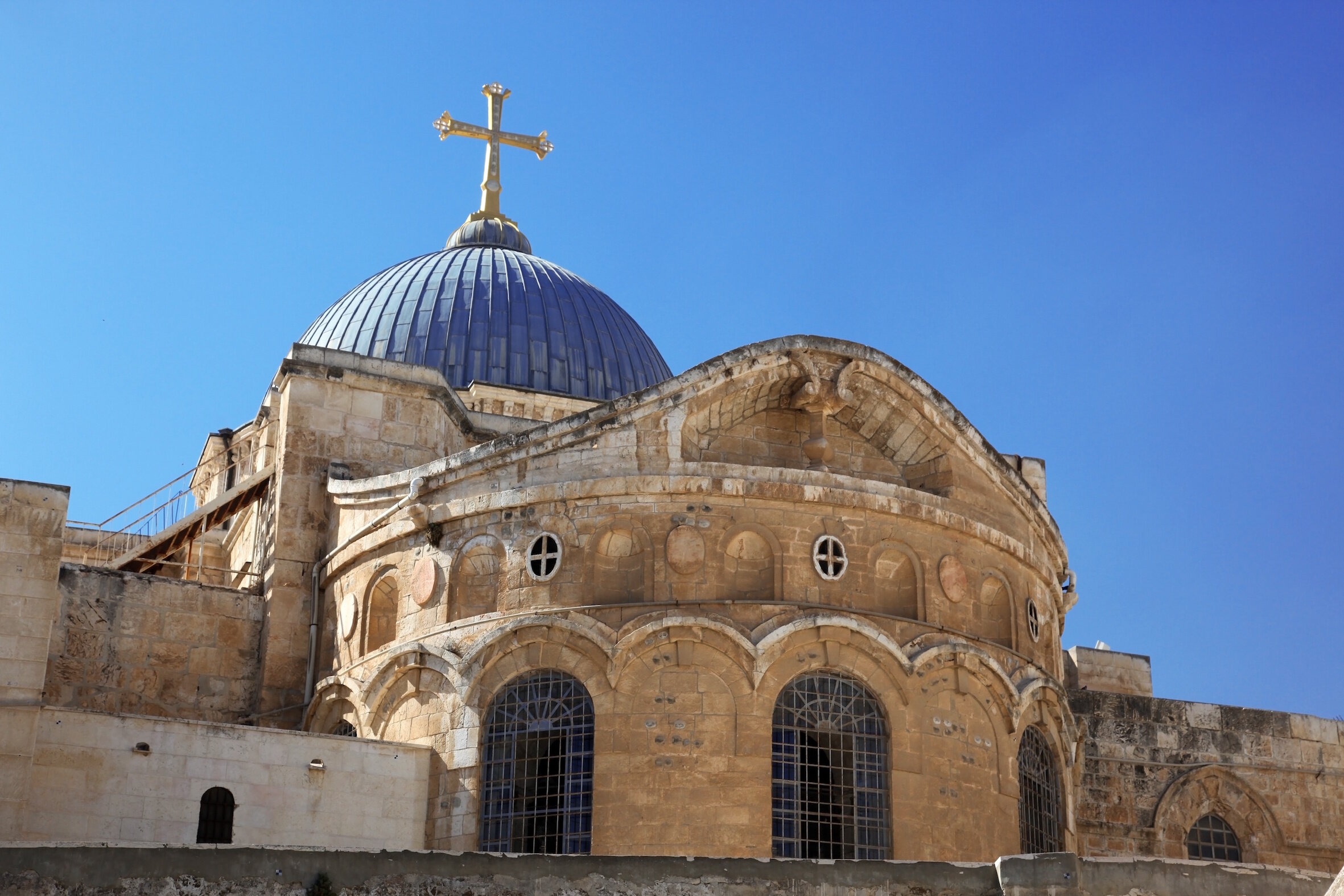It is sometimes said that if all the pieces of wood that are venerated around the world as relics of the True Cross were put together, then there would be enough material to build a Spanish galleon. Fake News. In the preface to his excellent historical novel Helena, Evelyn Waugh debunks this canard: “It used to be believed by the vulgar that there were enough pieces of this ‘true cross’ to build a battleship,” writes Waugh; “In the last century a French savant, Charles Rohault de Fleury, went to the great trouble of measuring them all. He found a total of 4,000,000 cubic millimetres, whereas the cross on which our Lord suffered would probably comprise some 178,000,000. As far as the volume goes, therefore, there is no strain on the credulity of the faithful.”
It took some three centuries after the Crucifixion for the Cross to become an object of veneration. In the year 312 AD the pagan Roman Emperor Constantine looked up to the sun and saw a cross of light above it. The words “In this sign you will conquer” were written in the sky. He was about to engage in a terrible battle with his political rivals on the outskirts of Rome, and the outcome was far from certain. Obeying what he understood to be a heavenly portent, he had the Cross marked on the shields of his soldiers and was victorious. Hitherto a symbol of the most shameful death, the Cross became a mark of honour, which men carried into battle as their standard and kings wore over their heads on royal crowns. Constantine’s triumph over his enemies meant that Christianity would become the official religion of the Roman Empire. The Roman world embraced the Cross, and the era of what would become known as Christian civilisation had dawned.
The feast of the Exaltation of the Holy Cross on 14 September celebrates the beginning of public veneration of the Cross soon after this victory. The Cross on which our Saviour died was miraculously discovered in Jerusalem by Constantine’s mother St Helen on this day in 326; and on the same date two churches, built at the site of Calvary by Constantine, would be dedicated. Saint Helen carried a portion of these relics back to Rome to keep in her palace, which would become the basilica of Santa Croce in Gerusalemme. In addition to this, the feast also commemorates another military victory, that of the Emperor Heraclius over the Persians, which led to the return of the main relic of the True Cross to its shrine in Jerusalem in 628.
Our chief reason for observing this feast, however, is not to celebrate mere military victories. It is to rejoice in the “great work of love” by means of which death was conquered on the tree of the Cross. It is from being soaked in the precious and soul-saving Blood of Our Saviour that the Cross attains its power.
The Cross, then, is the symbol and, in part, the source of our salvation. “In this sign you will conquer.” By this sign our enemies are put to flight. By this sign we gain victory over the world, the flesh and the devil. By this sign the Church in Her Sacraments marks us as the property of Christ and protects us from evil. The sign of the Cross is used countless times in our lives by the Church, beginning in our Baptism when we are marked on numerous occasions with the Cross (over our forehead and heart, to consecrate our mind and will to the service of God, over our forehead once again to show that we have been redeemed from the power of the devil, and in the holy anointings which give us spiritual strength and unite us to Christ, the Anointed One).
In the Sacrament of Confirmation, our anointing with Chrism in the sign of the Cross marks our enrolment into Christ’s army. We must never be ashamed of this royal banner of our King. We should make the sign of the Cross often, and with great devotion. Signing ourselves with the Cross and saying “In the name of the Father, and of the Son and of the Holy Spirit” is the means that the Church has given us to ‘tune in’ to that frequency on which we communicate with the Blessed Trinity. We should make sure that we have a blessed crucifix in at least one room in our homes. This serves not only as a reminder of the price of our Redemption, but also as a powerful protection against the work of the devil, whose presence and activity is all too prevalent in the world around us today.
During this month of September, let us ask Our Lord to give us the strength to embrace the Cross in our daily lives. May Our Blessed Lady, whose Nativity we celebrate on the 8th September, accompany us with Her intercession and encouragement along every step of the way of the Cross which is our one and only route to the fullness of life in Eternity.
The Oratory’s relics of the True Cross carry the seals and certificates from the Basilica of Santa Croce which indicate that they are part of the priceless treasure which St Helen carried to Rome in the early Fourth Century, and which she had discovered at the site of Calvary by means of miraculous signs. They are venerated on Good Friday and, indeed, on most Fridays of the year outside of Eastertide, after the evening Mass.
Father Julian Large

